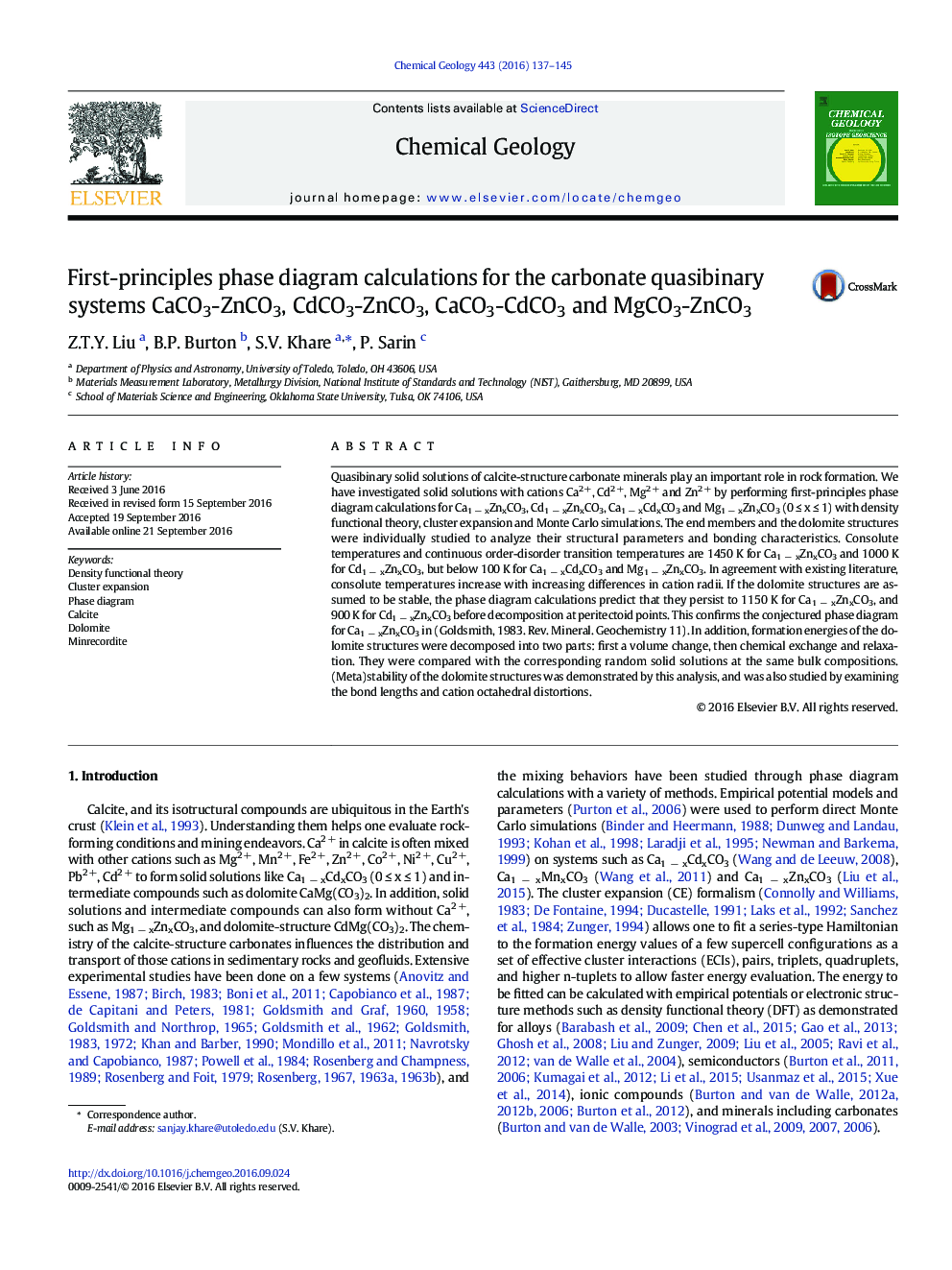| کد مقاله | کد نشریه | سال انتشار | مقاله انگلیسی | نسخه تمام متن |
|---|---|---|---|---|
| 6435995 | 1637531 | 2016 | 9 صفحه PDF | دانلود رایگان |

- First-principles phase diagram calculations for calcite-structure solid solutions were performed with cluster expansion.
- Consolute and transition temperatures are ⥠1000 K for (Ca,Zn)CO3 and (Cd,Zn)CO3, < 100 K for (Ca,Cd)CO3 and (Mg,Zn)CO3.
- If dolomite structures assumed stable, they persist to peritectoid points at ~1000Â K for (Ca,Zn)CO3 and (Cd,Zn)CO3.
- Dolomite structures were studied through two-step energy decomposition, and bond lengths and cation octahedral distortions.
Quasibinary solid solutions of calcite-structure carbonate minerals play an important role in rock formation. We have investigated solid solutions with cations Ca2 +, Cd2 +, Mg2 + and Zn2 + by performing first-principles phase diagram calculations for Ca1 â xZnxCO3, Cd1 â xZnxCO3, Ca1 â xCdxCO3 and Mg1 â xZnxCO3 (0 â¤Â x â¤Â 1) with density functional theory, cluster expansion and Monte Carlo simulations. The end members and the dolomite structures were individually studied to analyze their structural parameters and bonding characteristics. Consolute temperatures and continuous order-disorder transition temperatures are 1450 K for Ca1 â xZnxCO3 and 1000 K for Cd1 â xZnxCO3, but below 100 K for Ca1 â xCdxCO3 and Mg1 â xZnxCO3. In agreement with existing literature, consolute temperatures increase with increasing differences in cation radii. If the dolomite structures are assumed to be stable, the phase diagram calculations predict that they persist to 1150 K for Ca1 â xZnxCO3, and 900 K for Cd1 â xZnxCO3 before decomposition at peritectoid points. This confirms the conjectured phase diagram for Ca1 â xZnxCO3 in (Goldsmith, 1983. Rev. Mineral. Geochemistry 11). In addition, formation energies of the dolomite structures were decomposed into two parts: first a volume change, then chemical exchange and relaxation. They were compared with the corresponding random solid solutions at the same bulk compositions. (Meta)stability of the dolomite structures was demonstrated by this analysis, and was also studied by examining the bond lengths and cation octahedral distortions.
Journal: Chemical Geology - Volume 443, 2 December 2016, Pages 137-145